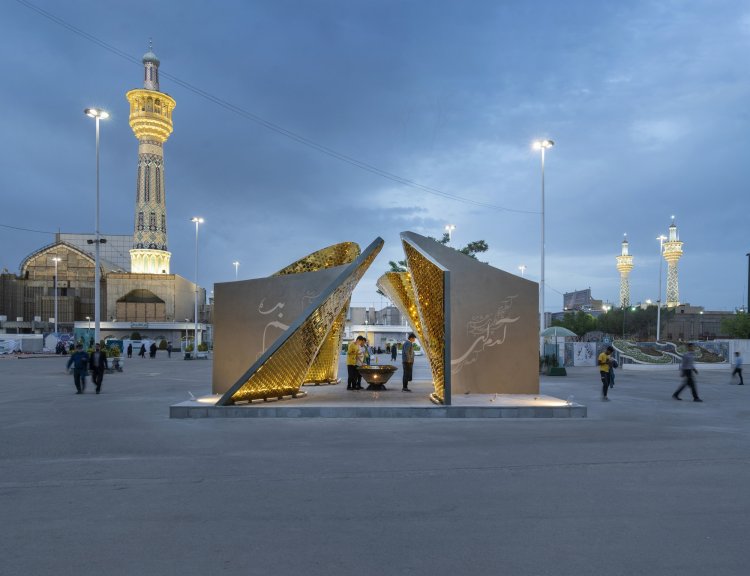Panah Pavilion
"Panah" is a chance, albeit a short one, in the hustle and bustle of the city to keep its users in cease. A short journey from the outside to the inside with the point of looking at oneself and an opportunity to imagine in the refraction of water and mirrors. The issue of the project was to design a pavilion with the theme of "The Guarantor of the Deer" that could be a part of the interactive flow of people with the city. The project site was located in Mashhad, Iran, facing the shrine of Imam Reza (Ali al-Rida) and in the middle of an active urban node, where is a lively day and night life, due to the presence of pilgrims and passers-by. we first looked for a concept that is both a metaphorical aspect of the project's matter and a common language between the mental meaning and the objective space. Hence, we found the word "PANAH" (shelter), which seemed to be able to create a common perception between different generations of users. In the design process, we used a four-centered arch structure as the first and most important model of pavilion in Iranian architecture called “Kushk” and redefined it in the form of a pavilion in its original meaning (urban Kushk). we considered a square row with dimensions of 9x9 meters and envisioned a 9-part geometry on it. by eliminating the mass from the corners, a possibility called "external space and internal space" was created on the podium. Then we started to hollow out the inner space and only pillars remained in the lightest state. We considered the shells in contemporary literature as a fluid form and a metaphor of the soul that is struggling to reach its destination of peace and quiet. The outer face of the shells is dark in color and represents pollution and everyday life that corrodes the human spirit. The inner surface of the plates is made of a polished mirror, which has been removed from that rust, because of water proximity (water is a symbol of purity in Iranian culture and art) and is an expression of the essence of human existence, of peace and tranquility. The pavilion, with an impression of the main structure of the Shrine and the golden porch, is trying to play a role of dynamic urban node with a semi-transparent and metaphorical structure, the common language of the physical, cultural, religious and historical layers of its context. In the inner experience, the user sees his own images in the interior space after being placed there. The refraction of the users’ images as living parts of the space in the mirrored shells gives a different effect to the space. By being in front of the mirrors, the audience sees neither himself nor others at the same moment, and sees both himself and others; fusion and dialectic of the simultaneity of individuality and crowd, which is the basis of the Eastern mysticism. (Unity in plurality and vice versa).















